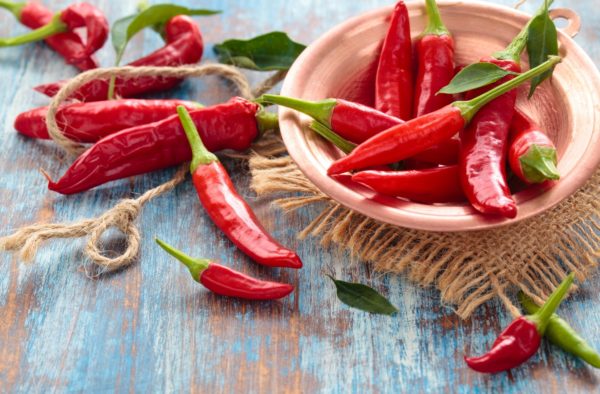
In nature, pepper is a perennial shrub, its height is from 30 to 120 cm. In our country, sweet and hot peppers are grown as an annual crop. Pepper fruits are hollow multi-seeded berries of various shapes. Their weight ranges from 0.25 to 200 grams. Thanks to the work of breeders, in addition to red, there are varieties of yellow, orange and chocolate shade.
Peppers have been eaten since ancient times. In summer cottages and in private farms, this culture is grown in open ground and closed structures. Today we will talk about the most popular varieties of red pepper.
Content
Claudio
Grade description
A hybrid variety of sweet, red pepper. Claudio pepper is very early, its growing season is only 72 - 80 days. The bushes of the plant are erect, strong with a large number of leaves, reach a height of 50–70 cm. From each plant, from 8 to 12 peppers can develop. In the process of growth, the fruits are green in color, when ripe, they acquire a dark red color. Peppers average in size weigh 200–220 gr. The taste is sweet, the pulp is juicy. Claudio pepper has a wall thickness of 11 mm.
Claudio pepper is resistant to sunburn and viruses. Plants can be grown in greenhouses and open beds. Fruits harvested in green are stored for about two months.
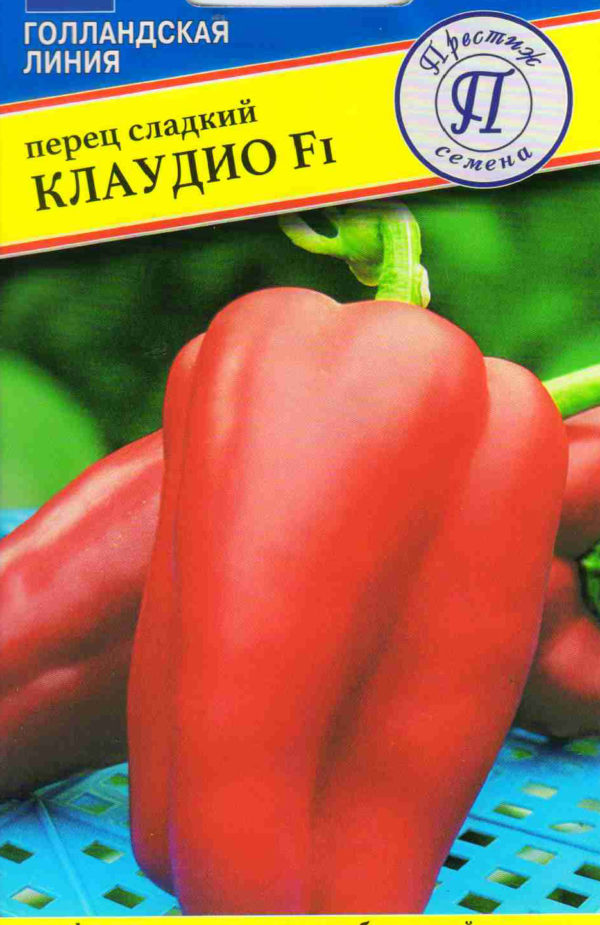
Growing Features
In most regions of our country, this hybrid is grown through seedlings. Seeds are planted in warm water (45 ° C) before planting, then wrapped in tissue and kept moist for 2-3 days. In this case, the air temperature should be +25 degrees. Thus, stimulation of seed germination occurs. Plants are transplanted into the open ground at the age of 60–70 days, when there is no threat of return frosts. Pepper is placed every 50 cm, in the rows leave 70 cm. Care consists in top dressing, watering, weeding.
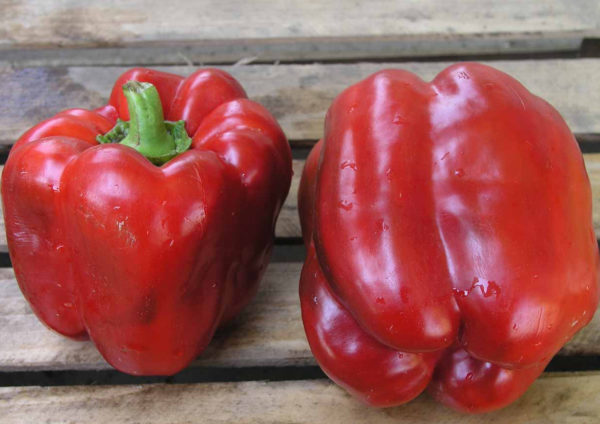
Viking
Grade description
Viking pepper belongs to the Siberian series. Plants are grown in closed structures and open areas. After seed germination until the fruit fully ripens, 105–115 days pass. The bushes of this variety are semi-spreading, low. During the growth period, the fruits are green in color, when ripe, they turn red. The shape of the peppers is cylindrical, weight about 150 gr, the taste is sweet. The wall thickness is 4–5 mm. Fragrant juicy fruits are suitable for canning, freezing, cooking culinary dishes.
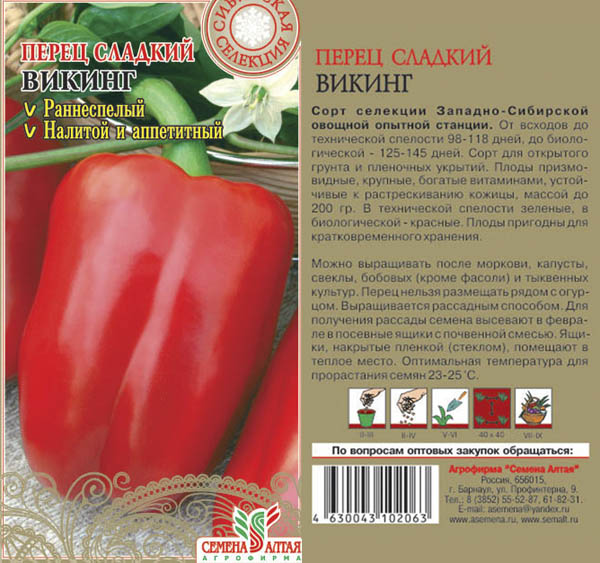
Growing Features
Seeds are sown for seedlings from March 10 to 20. Before planting, they are soaked in a solution of epin or heteroauxin. For planting pepper use a specialized or universal soil for vegetables. Seeds are sown to a depth of 3 cm, after which they are covered with soil and watered with warm water. Landings are covered with a film. Every day, cellophane is removed for 10-15 minutes to ensure sufficient airflow. For seed germination in the room, it is necessary to maintain +25 degrees. Sweet pepper seedlings are watered and provide the right amount of light (12-14 hours every day). 10 days before planting on a permanent place, the plants are hardened.
Peppers seedlings are transferred to open ground at the age of 70 days. A plot for plants is selected sunny, without close occurrence of groundwater, with light fertile soil. Pepper will grow well after peas, beans, cucumbers, cabbage, onions, herbs. Young plants are planted at a distance of 35–45 cm, between the rows leave 50–60 cm. Plants of this variety cannot tolerate abundant and frequent watering. In the process of planting growth, sweet peppers need weeding, cultivation, top dressing and watering. Harvest of Viking pepper ripen from August 1 to 30.
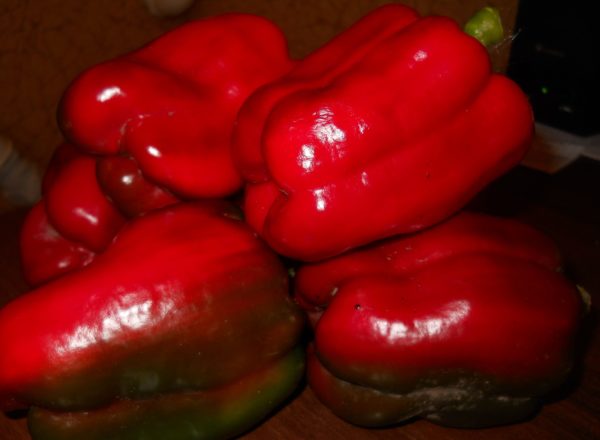
"Vaudeville"
Grade description
The variety is early ripe, the fruits are sweet, red in color, ripen on 100-115 days. Bushes are standard, spreading. The peculiarity of the variety is the vertical growth of prismatic fruits. If pepper “Vaudeville” is grown in a greenhouse, then the bushes grow to 1.3 meters in height. Fruits of a red tint, weighing 230–300 gr., Wall thickness 7 mm. From 1 m² you can collect 8-10 kg of fruit. The variety is resistant to TMV, bacterial diseases. The fruits of this variety are used in fresh salads, for cooking and in canning. Pepper "Vaudeville" is included in the state register.
Growing Features
Peppers are grown in seedlings. Seeds are planted in the first half of March. Shoots appear after 7-10 days, at a temperature of +22 +25 degrees. Transplanted seedlings to a permanent place when there is no threat of night frost. When transplanting plants, they are careful not to damage the root system. 35 cm are left between the bushes, rows are placed after 50-60 cm. 3-5 plants are planted per square meter. Bushes must be tied to a support. 10 days after planting, young plants are fed complex fertilizer. In the process of growth, the bush is formed in two shoots.
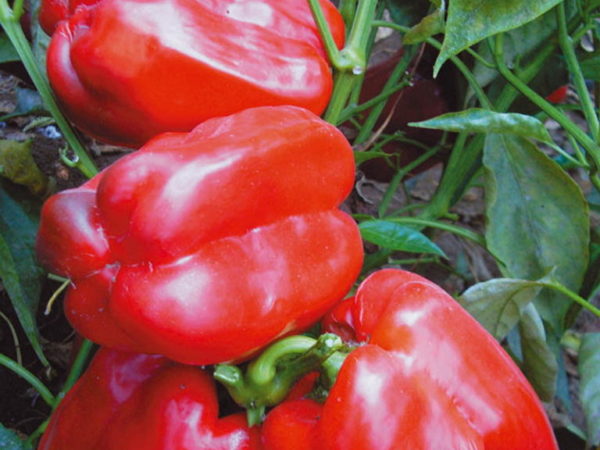
"Fakir"
Grade description
"Fakir" refers to early ripe varieties of red bell pepper. Bushes are low, moderately sprawling. Perhaps grown in greenhouses and open beds. The fruits are small, weighing from 100 to 120 grams. The wall thickness is 4–5 mm. The variety is fruitful, since 5-6 kg of fruits are harvested from one bush.
The bush of the plant is low, moderately sprawling. In greenhouse conditions, it requires storing and tying the stem. In addition to red pepper, breeders bred the orange, chocolate look of the Fakir. Fruits are used for making fresh salads, canning, cooking culinary dishes. Ripened fruits have a dense skin, due to which pepper well withstands long-distance transportation.
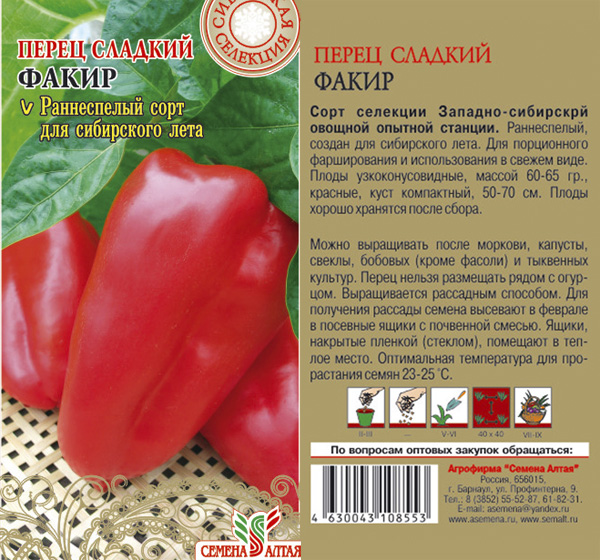
Growing Features
The plant is grown in seedlings. Seeds are sown from March 1 to March 20. For seed germination, it is important to keep the soil moist, as well as provide air temperature up to +25 degrees.
Peppers are planted in closed structures in mid-May; seedlings are transferred to open areas after the threat of return frost has passed. Between plants, they stand 40 cm, rows are placed at a distance of 70 cm. Harvesting begins in mid-July.
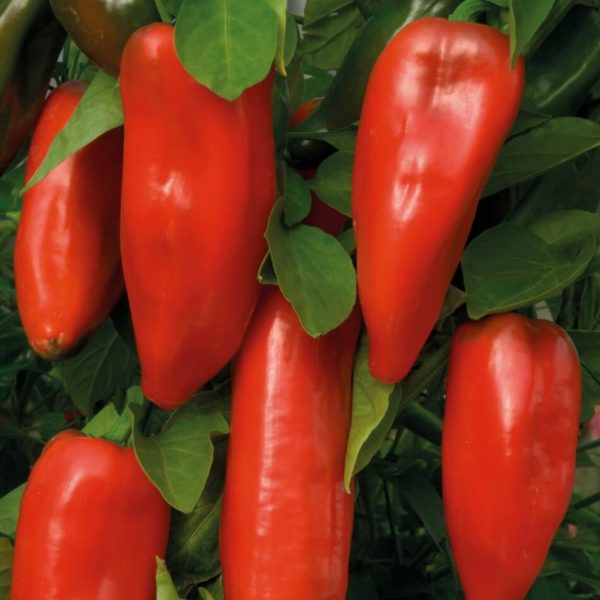
Triple Star
Grade description
New hybrid of sweet red pepper. Triple Star can be grown in open ground or in a greenhouse. The plant is powerful, with red cuboid fruits, 8–9 cm in diameter. Bush height is up to 90 cm. Plants need support and garter. The fruit mass is 170 g., The walls are of average thickness 5-6 mm. The plant is resistant to changes in air temperature. Harvest can be transported over a long distance. The fruits are used in fresh salads, canning, freezing and cooking.
Growing Features
Seeds are sown for seedlings in the first half of March. For planting, use light fertile soil. The seed placement depth is 1.5-2 cm. Crops are watered and covered with a cellophane film. Shoots appear at a temperature of + 22 + 25 degrees.Pepper seedlings are best not to dive, because after transplanting the plants do not grow for a long time.
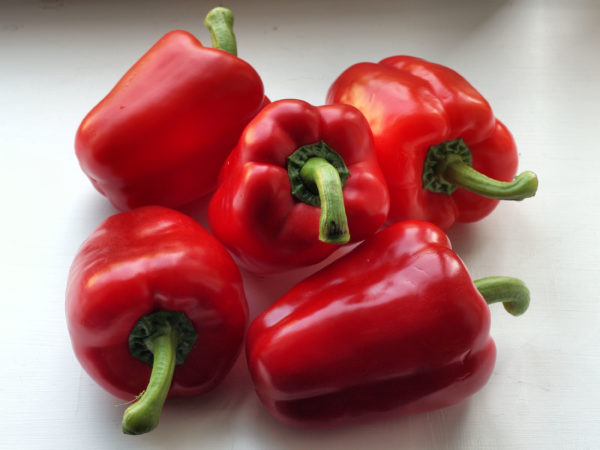
"Sprinter"
Grade description
Mid-season variety of red bell pepper. After sprouts appeared, you can harvest in 120 days. The plant is spreading, medium height. Fruits are flat-round in shape, weighing 70–100 g. Wall thickness 9.5–10 mm. Initially, the fruits of green color when ripe acquire a dark red hue. The pulp is juicy, sweet with a pronounced aroma. The variety can be grown for commercial purposes.
Growing Features
Seeds are planted in late February or early March. After germination, the plants are watered, fed with complex mineral fertilizer. 10 days before planting on a permanent place, the plants are hardened. Young peppers are planted under film shelters in mid-May, in open areas no earlier than early June. At least 40 cm is left between each plant, and rows are placed at a distance of 60 cm. After 10 days, the plants are fed with a complex fertilizer. Further care consists of weeding, loosening, watering and fertilizing.
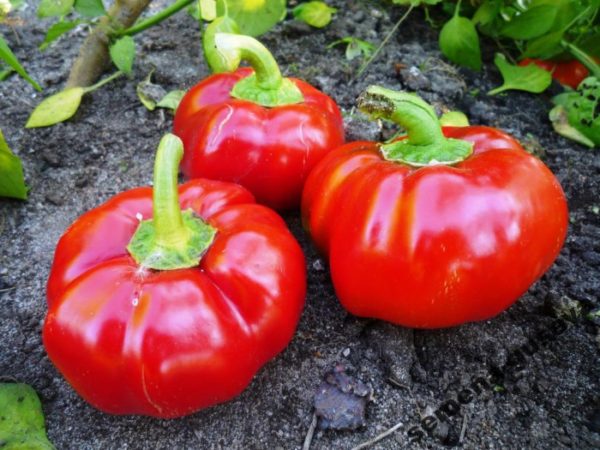
Prokraft
An early ripe hybrid of red, sweet pepper from the Dutch breeders. Pepper Prokraft F1 is recommended for cultivation in open beds. The plant is powerful, plentifully deciduous. The fruits of this hybrid are perfectly tied in a hot summer. The diameter of the fruit is 9.5-10.5 cm. The walls are thick up to 12 mm. The plant is resistant to many fungal and viral diseases. The fruits are used in fresh salads, canning, cooking a variety of dishes.
Growing Features
Seeds are sown for seedlings in peat tablets so as not to resort to picking. After about 10 days, sprouts appear at a temperature of +23 degrees. Plants are transplanted into the open ground in early July. Bushes are located at a distance of 40 cm from each other. Between the rows they stand 60–70 cm. In order for the plants to better adapt to natural conditions, the beds are covered with agrospan. This will help young peppers to take root faster and delay moisture evaporation. Plants are watered, fertilizing 2-3 times per season, fertilizing and weeding the beds as necessary.
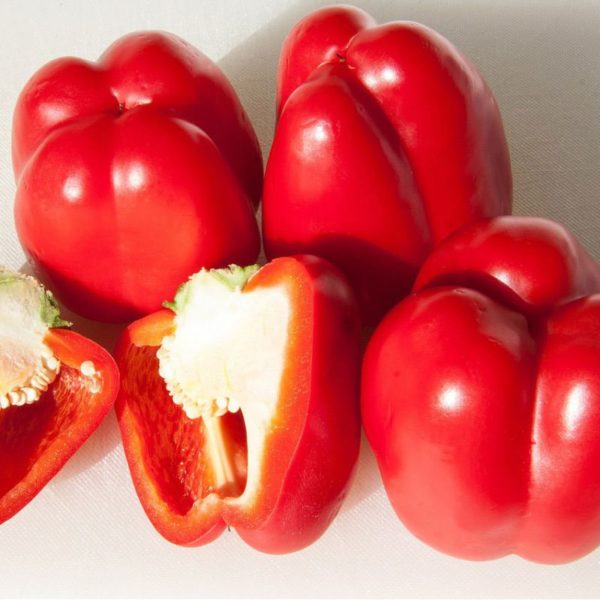
Husky
An early hybrid of sweet pepper. Fruits are conical in shape, in the stage of growth of white color, when ripe acquires a red color. Wall thickness 7–9 mm, fruit size 12 cm. The plant is powerful, with a well-developed root system. Husky peppers can be grown in open areas and hotbeds. This hybrid is resistant to black bacterial spotting, tobacco mosaic. From 1 ha 90-100 tons.
Growing Features
Pepper seeds are sown in March, seedlings at the age of 55 days, can be transplanted to a permanent place. When the threat of freezing frost passes, the plants are transplanted into the ground. 4 plants are placed on 1 m². Plantings are carefully watered, covered with agrospan or other similar material. After about a week, additional shelter is removed. Peppers are watered, they apply complex fertilizer 2-3 times a season, weed and loosen the soil.
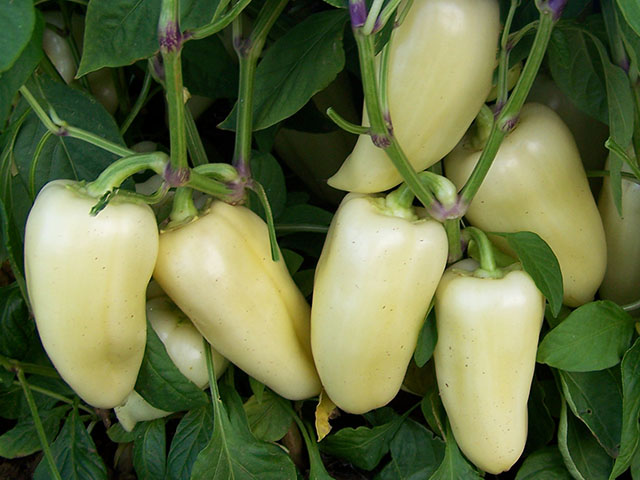
Popular varieties of red hot pepper
Without hot pepper, it’s impossible to cook many popular dishes. Its use in food not only gives a special pungent taste, but also has a positive effect on human health. Red hot peppers contain large amounts of vitamin C.
Adjika
The medium early ripening variety is intended for cultivation in open ground.Fruits of red color, elongated, weighing up to 90 gr. The pulp is thick, pungent, with a pleasant aroma. The fruits are used as a seasoning in the preparation of culinary dishes and preparations.
Seeds are recommended to be planted in early March, seedlings of hot pepper are planted at a constant place at the age of 60–70 days. There is a distance of 35 cm between plants, 50 cm between rows. The first fruits ripen in July.
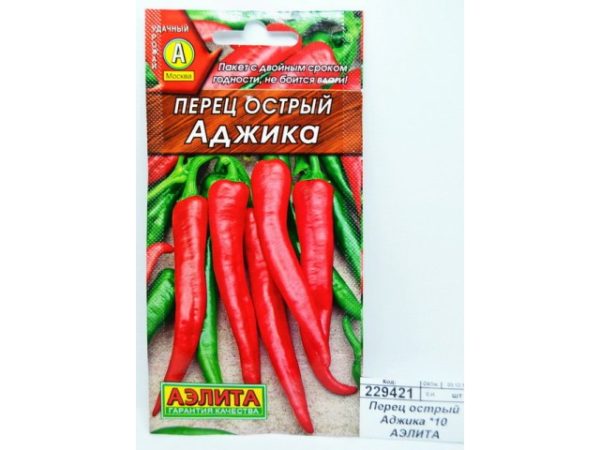
Barmaley
An early variety of hot pepper, from germination to ripening, takes 90–95 days. Side shoots do not develop on the plant, this greatly facilitates the care of plantings. The fruits are large, long from 12 to 15 cm. Plants of this variety tolerate temporary cold snap and do not need to be formed.
The variety is grown in seedlings. Seeds are planted in the second half of March, in light fertile soil. You can use the prepared soil of a universal type or prepare the soil mixture yourself. To do this, take 2 parts of soddy soil + 2 parts of humus + 1 part of coarse sand. Seeds germinate at a temperature of +23 degrees. Young plants are transplanted to a permanent place in late May or early June. Leaving consists in watering, fertilizing and weeding.
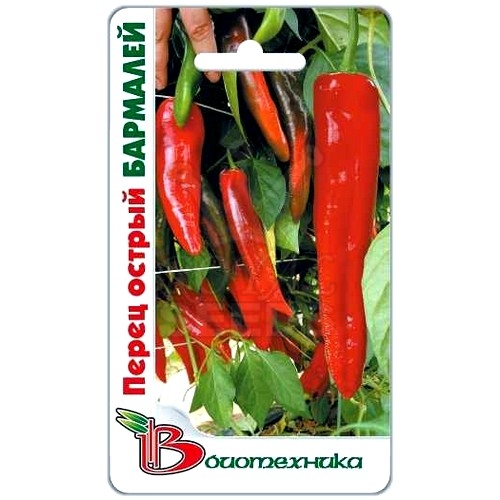
"Red Fat Man"
The variety is mid-season, intended for cultivation in open areas. Full ripening of fruits occurs for 120-145 days. The bushes are semi-spreading, low. Fruits of red color, elongated conical shape, with a pronounced sharp taste. The fruit mass is from 60 to 90 g., 18 cm long, wall thickness 4 mm. 2.9 kg of hot peppers are obtained from 1 m². "Fat Red" can be grown for commercial use. The fruits are used in cooking, canning, and also as a seasoning.
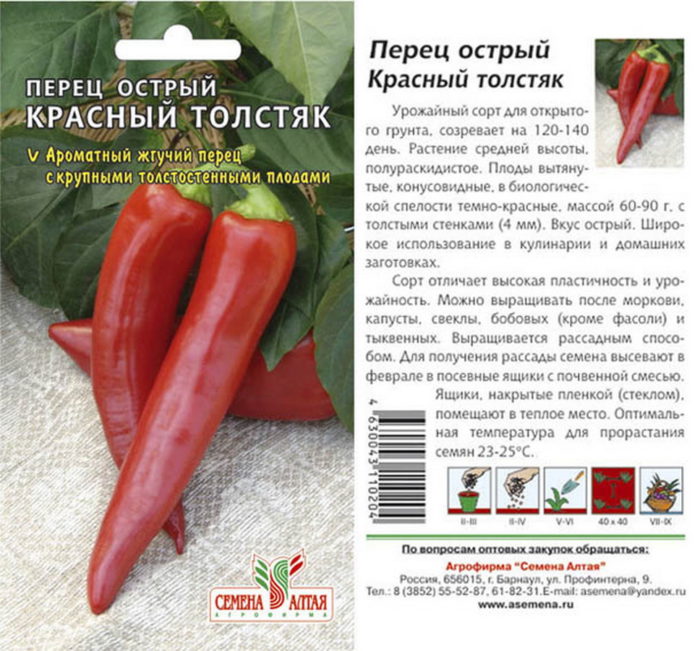
Reviews
Valentina, 46 years old:
“I planted sweet pepper“ Kladio ”, pleased 100% germination of seeds, strong plants perfectly transferred the transplant to the open ground. The fruits are tasty, sweet, juicy. Good variety, I advise. "
Valery, 51 years old:
“Last year, I planted two varieties of sweet pepper“ Vaudeville ”and“ Viking ”mid-early varieties. Seeds for seedlings were sown in the first half of March. Transplanted into open beds on June 10. Harvest began to ripen in early August. I fed plantings three times during the summer, and used a solution of bird droppings as fertilizer. ”
Elena, 38 years old:
“I liked the husky sweet pepper variety, its fruits stand out among the rest in an unusual white color. When ripe, turn red. Harvest variety, from its fruits tasty, fragrant dishes are obtained. During the growth, the pepper bushes did not hurt, endured the heat. ”
Vladislav, 43 years old:
“In our family everyone loves hot sauces, we prepare them for the whole winter. To do this, I grow hot pepper "Adjika". Fruits of red color, small, long form with fleshy pulp. Hot pepper grows separately from sweet. Over the summer, I feed him twice before flowering and during the formation of fruits. Harvest is always good. ”




 Calorie pepper stuffed with meat and rice - BZHU per 100 grams
Calorie pepper stuffed with meat and rice - BZHU per 100 grams Gorky pepper - the best varieties for open ground
Gorky pepper - the best varieties for open ground Hot pepper seeds - the best varieties for open ground and reviews
Hot pepper seeds - the best varieties for open ground and reviews Capsicum tincture for hair - how to use and reviews
Capsicum tincture for hair - how to use and reviews